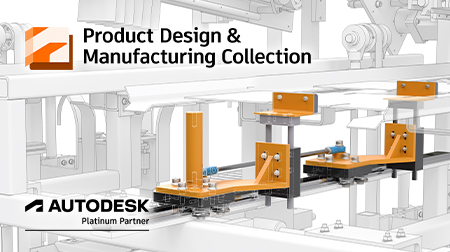
Introducing post curing to your stereolithography 3D printing process helps you get the most out of your 3D prints, improving material strength and performance.
This post will discuss the process of post curing with an introduction to the science of transforming the mechanical properties of our 3D prints We will take a look at a range of post curing methods, from simply using sunlight to investing in a post curing chamber engineered for specific materials.
Why Post Cure My SLA 3D Prints?
When your SLA part is fully printed, it remains on the build platform in a “green state.” This means that while parts have reached their final form, the polymerization reaction has not been completed, and therefore, full mechanical properties have not yet been delivered. Light and heat will unlock the full potential of your 3D print. We call this final process post curing.

Material properties, such as modulus, are improved by post curing printed parts. Each type of Formlabs resin requires unique post cure settings. The data shown in the above graph is derived from internal testing by Formlabs and presented for illustrative purposes.
Post curing is a requirement for many Formlabs resins. After post curing, Engineering Resins reach their best functional properties and Formlabs Castable Resin will burn out cleanly. Post curing is absolutely mandatory for using biocompatible materials like the Formlabs Dental Resins for example.
Post curing is not required for Standard Resins, but will still increase the strength and stability of your prints. Post cured parts are also generally easier to sand and paint, allowing you to achieve a smooth and detailed finish.
The Science of Post Curing
We know that post curing improves material properties, but how does this actually work?
In simple terms, exposure to light triggers the formation of additional chemical bonds within a 3D printed part, making the material stronger and stiffer in the process.
Formlabs’ post curing unit, Form Cure, uses 405 nm light, while many other curing devices use UV light (wavelengths between 10 nm and 400 nm). Even sunlight will post cure parts, however the results are dependent on weather conditions.
Some post curing chambers also employ heat. Heat accelerates the process and enables even more complete bond formation, resulting in increases in material properties impossible to achieve with light alone.
A Molecular-Level Look
Inside every Formlabs resin is a continuous network of various types of polymer chains (monomers and oligomers). The resin itself is one highly cross linked macromolecule (if you selected a spot anywhere on a 3D printed part and zoomed into the molecular level, you could follow the polymer chain to any other spot in that part).
While printed resin is a continuous molecule, there are still some open reactive groups that can further cross link the polymer network.
As more cross links form, material properties, such as modulus and tensile strength, improve. The process of post curing links these unreacted groups to bring a 3D printed part to its maximum material potential.
Step 1: Heat
Post curing begins with heat. Rising temperatures increase energy, mobilising the polymer network. This gives reactive groups a higher probability of linking with one another.
Post curing maximises material properties in SLA 3D printed parts through the controlled synergy of temperature and light. Some post curing units will also rotate for consistent exposure throughout the part.
Once the molecule reaches the optimum temperature, reactive groups are moving close enough to each other that they can link with one another.
Step 2: Light
Photons of light activate remaining photoinitiators and generate a radical, which causes nearby reactive groups to link with one another.
With each new cross link, the polymer network is strengthened and material properties improve.
As more cross links continue to form in the resin, the network slightly densifies, resulting in some minor shrinkage of the part. This is normal for any parts produced with a resin based printer. PreForm, Formlabs’ free print file preparation software, automatically compensates for this shrinkage to ensure your post cured prints are dimensionally accurate to your original CAD designs. This precise calibration is especially important for dental materials that require very tight tolerances.
Choosing a Post Curing Method
There are many options for post curing, from curing simply with light (natural sunlight, UV nail salons, cure boxes, etc.) to using both light and heat, such as Formlabs’ Form Cure or the MTC BBCure.

Many methods of post-curing exist, such as this UV nail salon.
There are a range of factors to consider when selecting which post-curing method is best for your prints:
Materials used: For each resin formulation there's a certain wavelength range that will best maximise its mechanical properties. For Formlabs materials specifically, we recommend purchasing a unit that uses 405 nm light, as Formlabs resins are uniquely engineered to work with Formlabs printers, which use 405 nm lasers in the 3D printing process.
Intended applications: For applications that require optimal dimensional accuracy, select a curing unit tuned to the specific materials you are printing with. Such applications include prototyping products that need tight tolerances or dental applications that rely on precise fit (such as surgical guides or crown and bridge models). For applications where accuracy is less important, and tolerances are larger, a generic curing solution should be suitable.
Size and complexity: For small prints, a low cost UV nail salon can be an effective post curing tool. For larger and more complex parts, consider curing units that provide even exposure (through well balanced light placement, a rotating turntable, etc.) to ensure consistent curing throughout the part.
Materials properties can also vary with part geometry, print orientation, and print settings.
Speed requirements: Heat speeds up and optimises the post curing process. If speed is a concern, consider a unit that uses both light and heat to speed up the process.
MTC BBCure now available from Redstack

The MTC BBCure Tech is the perfect UV curing station for Formlabs’ engineering resins, standard resins and Castable resin. With a footprint of 350mm x 350mm x 312 mm, the BBCure Tech fits on a desk easily. It has full 360° UV LEDs inside, which bathe models with a 402nm UV light source at a temperature of up to 60°C.
By combining the functionality of UV LEDs with heat, it creates an all in one curing station for post curing your parts and models printed with a Formlabs or similar SLA 3D printer.
Buy your MTC BB Cure Tech UV curing station today at redstackshop.com.au
Coming soon: Post-Curing Designed for the Form 2

Formlabs’ post-cure solution, Form Cure, is designed to optimize the properties of parts printed in Formlabs resins.
Formlabs goal was to develop a post curing solution that would simplify and optimise post curing processes for Formlabs materials.
Formlabs have run extensive tests to determine the most effective technology, developed unique settings that work best for each resin, and designed an intuitive, automated process for hassle-free post curing.
The result is Form Cure, a reliable, professional post curing solution engineered to help our users get the most out of their Form 2.
Stay tuned for more information on the Form Cure, coming soon to redstackshop.com.au
Contact Redstack on 1300 667 263 to speak with a 3D printing specialist today or see our full range of 3D printers, resins and accessories at redstackshop.com.au













